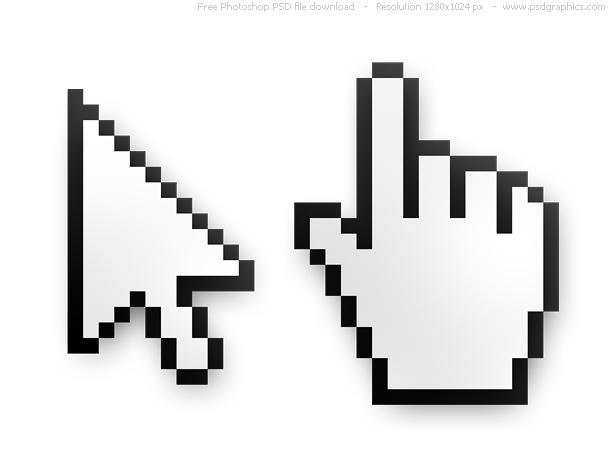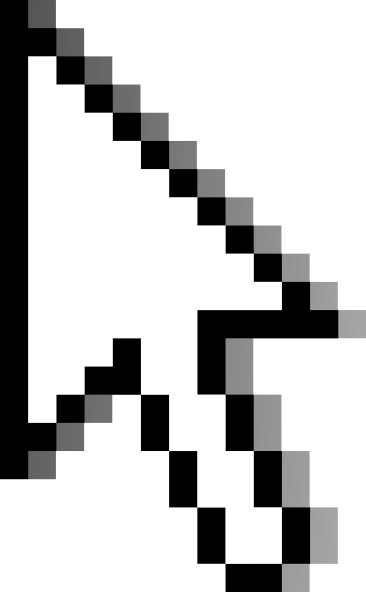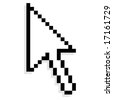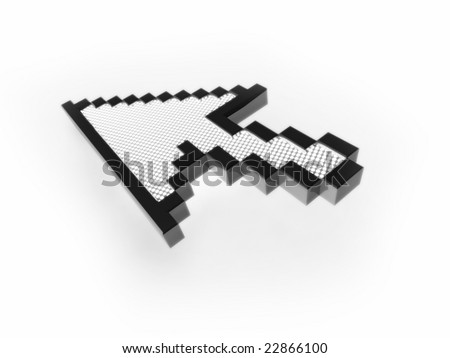Arrow keys typically located at the bottom of the keyboard to the side of the numeric keypad, usually arranged in an inverted-T layout but also found in diamond shapes and linear shapes. Arrow keys are commonly used for navigating around documents and for playing games. Before the computer mouse was widespread, arrow keys were the primary way of moving a cursor on screen. MouseKeys is a feature that allows controlling a mouse cursor with arrow keys instead. A feature echoed in the Amiga whereby holding the Amiga key would allow you to move the mouse pointer with the arrow keys in the workbench(OS), but most games require a mouse or joystick. The use of Arrow Keys in games has come back into fashion from the late 1980s and early 1990s when Joysticks were a must, and were usually used in preference to Arrow Keys with some games not supporting any Keys.
Some Commodore 8-bit computers used two keys instead of four, with directions selected using the shift key.
The original Apple Macintosh had no arrow keys at the insistence of CEO Steve Jobs, who felt that people should use the mouse instead. They were deliberately excluded from the Macintosh launch design as a forcing device, acclimating users to the new mouse input device and inducing software developers to conform to mouse-driven design rather than easily porting previous terminal-based software to the new platform. Arrow keys were included in later Apple keyboards. Early models with arrow keys but no middle section (Home, End, etc.) placed them in one line below the right-hand Shift key in an HJKL-like fashion; later versions had a standard inverted-T layout, either in the middle block or as half-height keys at the bottom right of the main keyboard.
Although the "arrow keys" provide one convention for cursor movement on computers, there are also other conventions for cursor movement that use entirely different keys.
WASD (,AOE on Dvorak keyboards; ZQSD on AZERTY keyboards) is a set of four keys on a QWERTY or QWERTZ computer keyboard which mimics the inverted-T configuration of the arrow keys. These keys are often used to control the player character's movement in computer games. W/S control forward and backward, while A/D control strafing left and right. Typically, modifier keys are not used to strafe (as performed using the Alt + arrow keys in older games such as Doom and Duke Nukem 3D).
Primarily, WASD is used to account for the fact that the arrow keys are not ergonomic to use in conjunction with a right-handed mouse. This also allows the user to use the left hand thumb to press the space bar (often the jump command) and the left hand little finger to press the CTRL or SHIFT keys (often the crouch and/or sprint commands).
As opposed to the default keyboard-only controls of Doom or Duke Nukem 3D, WASD is usually used in combination with a mouse. The greatest advantage of using a mouse and keyboard combination over a keyboard-only configuration is the ability to use the mouse to look around both vertically and horizontally, referred to as mouselook. Mouselook enables the player to perform techniques such as smooth circle strafing, which, although possible with the keyboard, was difficult to perform and resulted in jagged movement. One of the very earliest games to support WASD for movement was the 8-bit game, Castle Wolfenstein. (Note: It used S to stop and X to move down though.) While id Software was a fan of the original games, (see Wolfenstein 3D for references), the scheme wasn't popularized until competitive play in Quake and subsequently QuakeWorld made clear its advantages over the older arrow key configurations. In the same year that Castle Wolfenstein was released, 1981, the game Wizardry used the AWD keys for movement in a 3D dungeon. Both the programmers of Castle Wolfenstein and Wizardry were users of the earlier PLATO system where the game Moria used the AWD keys. Some gamers prefer the WASD keys to the arrow keys for other various reasons, including the fact that more keys (and therefore, game commands) are easily accessible with the left hand when placed near WASD. Left-handed mouse users may prefer using the numpad or IJKL with their right hands instead for similar reasons.
Some Commodore 8-bit computers used two keys instead of four, with directions selected using the shift key.
The original Apple Macintosh had no arrow keys at the insistence of CEO Steve Jobs, who felt that people should use the mouse instead. They were deliberately excluded from the Macintosh launch design as a forcing device, acclimating users to the new mouse input device and inducing software developers to conform to mouse-driven design rather than easily porting previous terminal-based software to the new platform. Arrow keys were included in later Apple keyboards. Early models with arrow keys but no middle section (Home, End, etc.) placed them in one line below the right-hand Shift key in an HJKL-like fashion; later versions had a standard inverted-T layout, either in the middle block or as half-height keys at the bottom right of the main keyboard.
 Computer Mouse Arrow |  Computer mouse cursors, arrow | Computer Mouse Cursor Icon |  Mouse Pointer Wolfram Es | Hand pointer icon |
 large computer mouse pointer. |  computer mouse icon arrow |  computer mouse pointer hand. |  Mouse arrow | Mouse Pointer Wolfram Es 2 |
Primarily, WASD is used to account for the fact that the arrow keys are not ergonomic to use in conjunction with a right-handed mouse. This also allows the user to use the left hand thumb to press the space bar (often the jump command) and the left hand little finger to press the CTRL or SHIFT keys (often the crouch and/or sprint commands).
 Mouse-cursor-hand-pointer-icon |  Cursor Arrow clip art |  stock photo : 3D mouse cursor |  Figure 1 - Mouse Displays |  Making your mouse pointer |
 This time the computer mouse |  stock photo : Computer mouse |  Computer arrow cursor 3d |  The USB Arrow Optical mouse |  Sunflowers (series of |
No comments:
Post a Comment